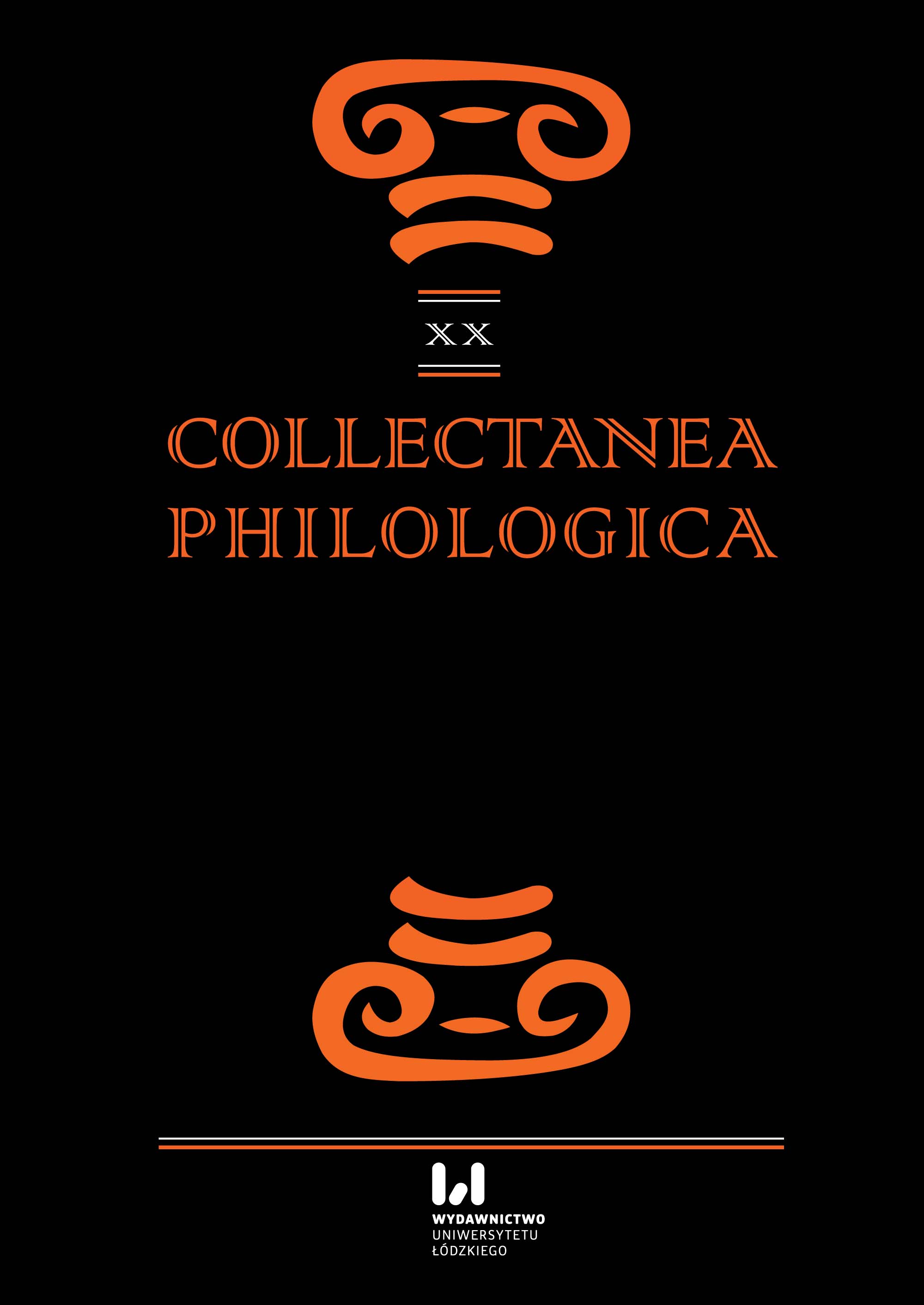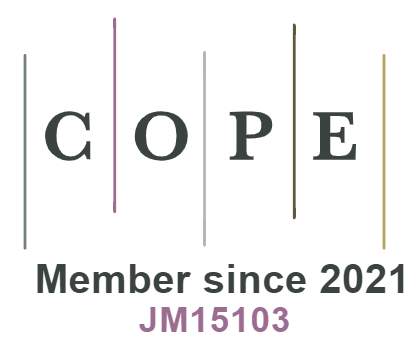Ἑρμῆς Κυλλήνιος w źródłach literackich i ikonograficznych
DOI:
https://doi.org/10.18778/1733-0319.20.03Słowa kluczowe:
Maia, Hermes, chelys, thysiaAbstrakt
-Bibliografia
Allen, T. W. et al. (eds.) (1980). The Homeric Hymns. Amsterdam: Adolf M. Hakkert.
Google Scholar
Appel, W. (tłum.) (2007). Homerica, czyli żywoty Homera i poematy przypisywane poecie. Warszawa: Wydawnictwo Algo.
Google Scholar
Arafat, K. W. (1990). Classical Zeus. A Study in Art and Literature. Oxford: Clarendon Press.
Google Scholar
Beaumont, L. A. (1993). Studies on the Iconography of Divine and Heroic Children in Attic Red-Figure Vase-Painting of Fifth Century BC, Vol. I, PhD. London: University College. http://discovery.ucl.ac.uk/ 1349800/1/366348_VOL1.pdf [z dn. 10 X 2017].
Google Scholar
Beazley, J. D. (1925). Attische Vasenmaler des rotfigurigen Stils. Tübingen: Mohr.
Google Scholar
Beazley, J. D. (1942). Attic Red-Figure Vase-Painters. Oxford: Clarendon Press.
Google Scholar
Beazley, J. D. (1971). Paralipomena: Additions to Attic Black-Figure Vase-Painters and to Attic Red-Figure Vase-Painters. Oxford: Clarendon Press.
Google Scholar
Bélis, A. (1985). „A propos de la construction de la lyre”. BCH 109, 201–220.
Google Scholar
Blatter, R. (1971) „Hermes der Rinderdieb”. Antike Kunst 14/2, 128–129.
Google Scholar
Blundell, S., Williamson, M. (eds.) (1998). The Sacred and the Feminine in Ancient Greece. London: Routledge.
Google Scholar
Burkert, W. (1979). Structure and History in Greek Mythology and Ritual. Berkley. Los Angeles, London: University of California Press.
Google Scholar
Burow, J. (ed.) (1986). Corpus Vasorum Antiquorum. München: Tübingen. Antikensammlung des Archäologischen Instituts der Universität.
Google Scholar
Carpenter, Th. H. et al. (eds.) (1989). Beazley Addenda. Oxford: University Press.
Google Scholar
Danielewicz, J. (1996). Liryka starożytnej Grecji. Warszawa: PWN.
Google Scholar
Danielewicz, J., K. Bartol. (2010). Atenajos, Uczta Mędrców. Poznań: Wydawnictwo Poznańskie.
Google Scholar
Detienne, M., Vernant J.-P. (1989). The Cuisine of Sacrifice among the Greek. Chicago, London: University of Chicago Press.
Google Scholar
Easterling, P. E. (1989). „Agamemnon’s Skeptron in the Iliad”. In: M. Mackenzie; M. Margaret; Ch. Roueché (eds.). Images of Authority. Papers Presented to Joyce Reynolds on the Occasion of her Seventieth Birthday, Cambridge: Cambridge Philological Society.
Google Scholar
Ekroth, G. (2008). „Burnt, cooked or raw? Divine and human culinary desires at Greek animal sacrifice”, In: E. Stavrianopoulou; A. Michaels; Cl. Ambos, (eds.). Transformations in sacrificial practices from antiquity to modern times. Proceedings of an international colloquium. Heidelberg, 12–14 July 2006. Berlin: Lit Verlag.
Google Scholar
Eurypides, (2015). Tragedie. T. V (Fragmenty. Przekład zbiorowy. Warszawa: Prószyński i Ska.
Google Scholar
Filostratos Starszy, (2004). Obrazy. Przeł. R. Popowski. Warszawa: Prószyński i Ska.
Google Scholar
Frazer, J. G. (ed.) (1965). Pausanias’s Description of Greece. Translated with a Commentary. Vol. 1–6. London: Macmillan.
Google Scholar
Gebauer, J. (2002). Pompe und Thysia. Attische Tieropferdarstellungen auf schwarz-und-rotfigurigen Vasen, Münster: Ugarit-Verlag.
Google Scholar
Goold, L. P., Evelyn-White, H.G (eds./trans. 1998). Hesiod, Homeric Hymns, Epic Cycle, Homerica. Cambridge: Harvard University Press.
Google Scholar
Hӓgg, Th. (1989). Hermes and the Invention of the Lyra an Unorthodox Version. Symbolae Osloenses, LXIV, 36–73.
Google Scholar
Hard, R. (2004). The Routledge Handbook of Greek Mythology. London, New York: Routledge.
Google Scholar
Jacobitz, K. (ed.) (1896). Luciani Samosatensis, Opera. Vol. I. Leipzig: Teubner.
Google Scholar
Jarczyk, M. (2013). Wybrane aspekty mitu w Hymnie homeryckim do Hermesa. Symbolae Philologorum Posnaniensium Graecae et Latinae. XXIII/2, 19–21.
Google Scholar
Johnston, S.I. (2002). Myth, Festival, and Poet: The Homeric Hymn to Hermes and its Performative Context. Classical Philology 97, 109–132.
Google Scholar
Karavites, P. (1987) Diplomatic Envoys in the Homeric World. RIDA 34, 41–100.
Google Scholar
Kerènyi, K. (2002). Mitologia Greków. Przeł. R. Peszke, Warszawa: Wydawnictwo KR.
Google Scholar
Kirk, G. S. (1987). The Homeric Hymns. In: P.E. Easterling, B.M.W., Knox, (eds.). The Cambridge History of Classical Literature, vol. 1, Greek Literature, Cambridge: University Press.
Google Scholar
Larson, J. (2001). Greek Nymphs. Myth, Cult, Lore. Oxford: University Press.
Google Scholar
Lebessi, A. (1976). “A Sanctuary of Hermes and Aphrodite in Crete”. Expedition Magazine 18, 1–13.
Google Scholar
Lobel, E., Page, D. L. (eds.) (1955). Poetarum Lesbiorum Fragmenta, Oxford: Clarendon Press.
Google Scholar
Mitchell, A. G. (2009). Greek Vase Painting and the Origins of Visual Humor. Cambridge: University Press.
Google Scholar
Ondine Pache, C. (2011). A Moment’s Ornament: The Poetics of Nympholepsy in Ancient Greece. Oxford: University Press.
Google Scholar
Pfeiffer, R. (ed.) (1953). Callimachus, vol. II: Hymni et Epigrammata. Oxford: Clarendon Press.
Google Scholar
Robertson, M. (1992). The Art of Vase-Painting in Classical Athens. Cambridge: Cambridge University Press.
Google Scholar
Schefold, K., Giuliani L. (1992). Gods and Heroes in Late Archaic Greek Art. Trans. A. Griffiths. Cambridge: University Press.
Google Scholar
Shelmerdine, S. C. (1984). Hermes and the Tortoise: A Prelude to Cult. GRBS 25, 203–205.
Google Scholar
Thesaurus Cultus et Rituum Antiquorum (ThesCra), T. 1. (2004). Los Angeles: The J. Paul Getty Museum.
Google Scholar
Van Straten, F. T. (1995). Hiera kala; Images of Animal Sacrifice among the Greeks. Leiden, New York, Koln: Brill.
Google Scholar
Vergados, A. (2011). Shifting Focalization in the Homeric Hymn to Hermes: the Case of Hermes’ Cave. GRBS 51, 1–25.
Google Scholar
Vergados, A. (2013). The Homeric Hymn to Hermes: Introduction Text and Commentary. Berlin: de Gruyter.
Google Scholar
Wesołowska, E. (1995). Owidiusz, Fasti. Kalendarz poetycki. Wrocław: Ossolineum.
Google Scholar
Zachari, V. (2013). Image de l’ espace ou espace de l’image? Autel et pilier hermaïque dans la céramique attique, Cathiers. Mondes ancienes 4, 2–20. http://mondesanciens.revues.org/1087 [z dn. 24 III 2017].
Google Scholar
Zalewska-Jura, H. (2004). „Sofoklesowa wersja mitu o Hermesie w świetle innych źródeł literackich”. Collectanea Philologica VIII. 59-71.
Google Scholar
Zalewska-Jura, H. (2006). W rytmie sikinnis: studium nad warstwą iluzji i podtekstów w greckim dramacie satyrowym. Łódź: Wydawnictwo Uniwersytetu Łódzkiego.
Google Scholar
Zanker, P. (1965). Wandel der Hermesgestalt in der attischen Vasenmalerei. Bonn: Habelt.
Google Scholar
Zieliński, T. (1920). Hermes Trismegistos. Studjum z cyklu: Współzawodnicy Chrześcijaństwa. Zamość: Zygmunt Pomarański i Spółka.
Google Scholar












